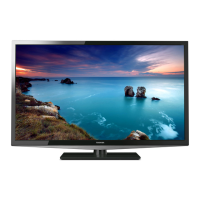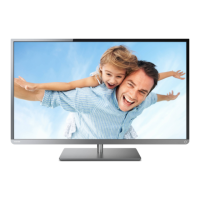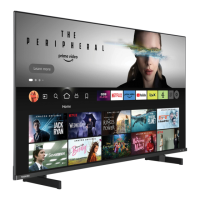How to remove black box on Toshiba 50L7300U LED TV screen?
- SStephen PatrickSep 9, 2025
To remove a black box on your Toshiba LED TV screen, set the closed caption feature to Off.

How to remove black box on Toshiba 50L7300U LED TV screen?
To remove a black box on your Toshiba LED TV screen, set the closed caption feature to Off.
How to resolve HDMI™ CEC operation issues on Toshiba 50L7300U LED TV?
To resolve HDMI™ CEC operation issues on your Toshiba LED TV, turn off the TV and unplug the power cord. After about a minute, plug the power cord back in and turn on the TV. You can also try using a different HDMI™ cable.
Why can't I view external signals on my Toshiba 50L7300U?
To view external signals on your Toshiba LED TV, ensure that the Input Lock is set to Off.
How to improve poor composite picture on Toshiba LED TV?
| Display diagonal | 50 \ |
|---|---|
| LED backlighting type | - |
| Supported video modes | 1080p |
| Display diagonal (metric) | 125.7 cm |
| Screen format adjustments | 16:9 |
| Supported graphics resolutions | 1920 x 1080 (HD 1080) |
| 3D | No |
| Audio system | Audyssey |
| HDMI ports quantity | 4 |
| DVI-D ports quantity | 0 |
| USB 2.0 ports quantity | 2 |
| Compatible memory cards | Not supported |
| Component video (YPbPr/YCbCr) in | 1 |
| Smart modes | Dynamic, Game |
| Lifestyle apps | Skype |
| Product color | Black |
| Panel mounting interface | 400 x 400 mm |
| Power consumption (standby) | - W |
| Sustainability certificates | ENERGY STAR |
| Package depth | 160 mm |
| Package width | 1237 mm |
| Package height | 800 mm |
| Package weight | 34600 g |
| Depth (with stand) | 234 mm |
|---|---|
| Height (with stand) | 742 mm |
| Weight (with stand) | 19300 g |
| Depth (without stand) | 58 mm |
| Width (without stand) | 1130 mm |
| Height (without stand) | 660 mm |
| Weight (without stand) | 17900 g |
Explains the meaning of safety caution icons used in the manual to highlight potential hazards.
Lists and describes the key features and technologies of the TV, such as HDMI, DNR, and Wi-Fi.
Provides a step-by-step guide for initial TV setup, placement, and basic usage.
Details the location and function of TV controls and connection ports on front, side, and back panels.
Explains common cable types (HDMI, USB, LAN, etc.) and their uses for connecting devices to the TV.
Step-by-step guide for inserting AAA batteries into the remote control for proper operation.
Covers effective range, learning remote functions, and controlling other devices via the remote.
Guides through the initial setup, including language selection, country, time zone, and network configuration.
Explains how to access and use the TV's main menu, submenus, and quick menu for settings.
Covers initial setup, menu language, country, time zone, and storage modes for personalized TV configuration.
Details channel tuning, skipping, labeling, and managing video inputs for optimal TV access.
Explains how to tune channels, use channel return, and select video inputs for viewing content.
Covers closed caption modes, digital CC settings, PIN codes, and parental controls for content management.
Covers picture size, aspect ratio, modes, quality, and advanced settings like Edge Enhancer.
Details audio settings like volume, balance, language, and advanced sound technologies like Audyssey.
Guides through network setup, wireless configuration, and connection testing for internet access.
Covers Intel WiDi wireless display and performing software upgrades for TV functionality.
Explains using Cloud TV features, apps, Netflix, VUDU, Internet, and Skype for enhanced content.
Details using MediaShare with USB and Media Servers for media playback and sharing.
Explains using apps on mobile devices, app profiles, and device pairing for TV interaction.
Covers basic steps for resolving common TV problems like no power or screen issues.
Addresses issues related to picture quality, input selection, color, sync, and sound.
Details problems with remote control, channel tuning, HDMI, network, and wireless connectivity.
Details system, coverage, power, audio, terminals, dimensions, and operating conditions.
Covers wireless, Ethernet, USB, PC, and HDMI signal formats and specifications.
Lists included accessories and explains TV operation using combination buttons.
Instructions for configuring the keyboard layout for special characters.












